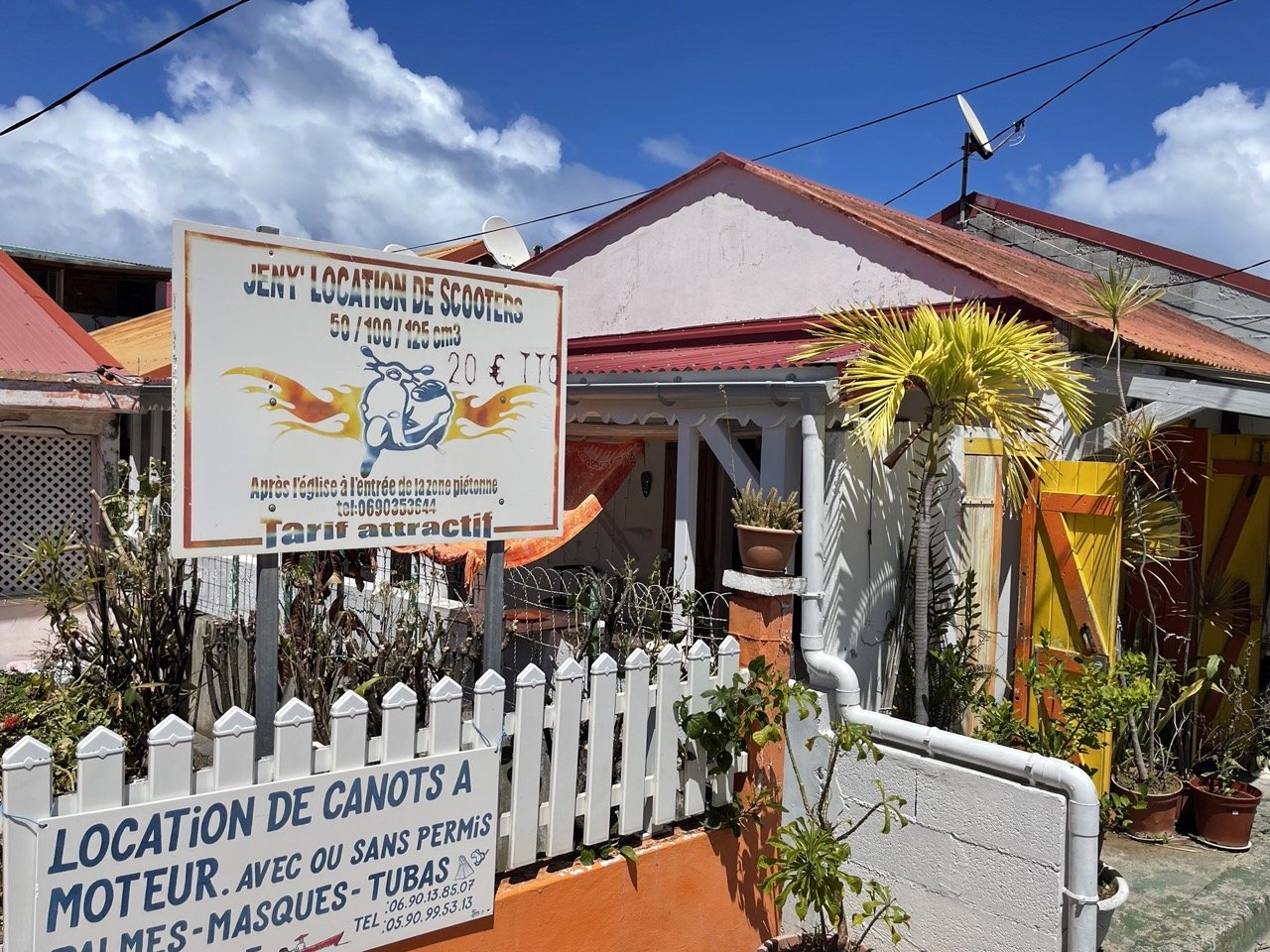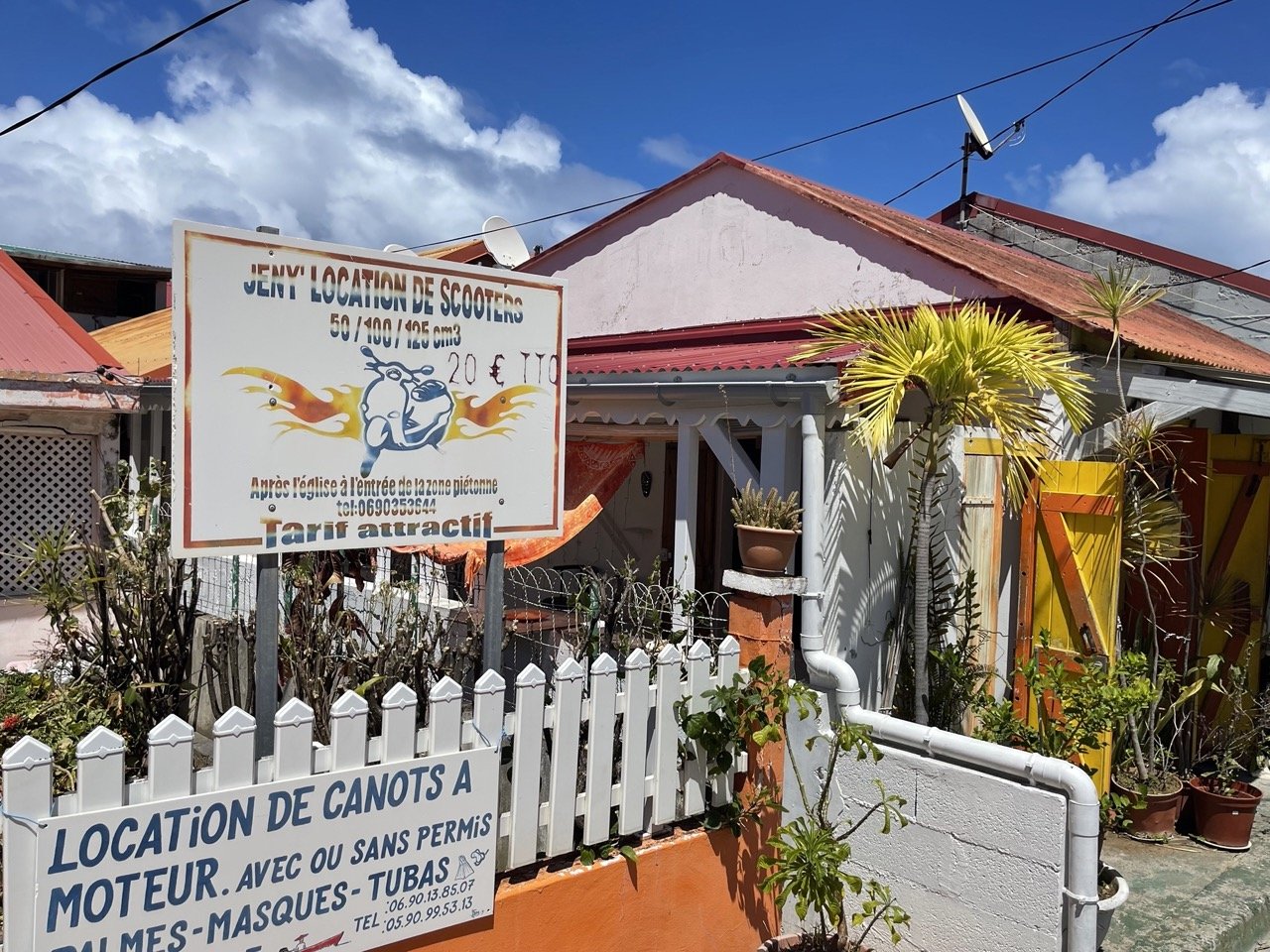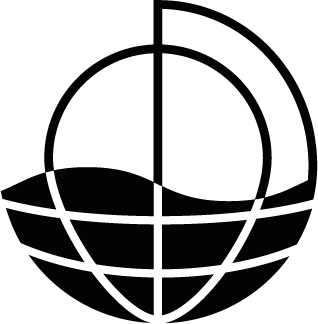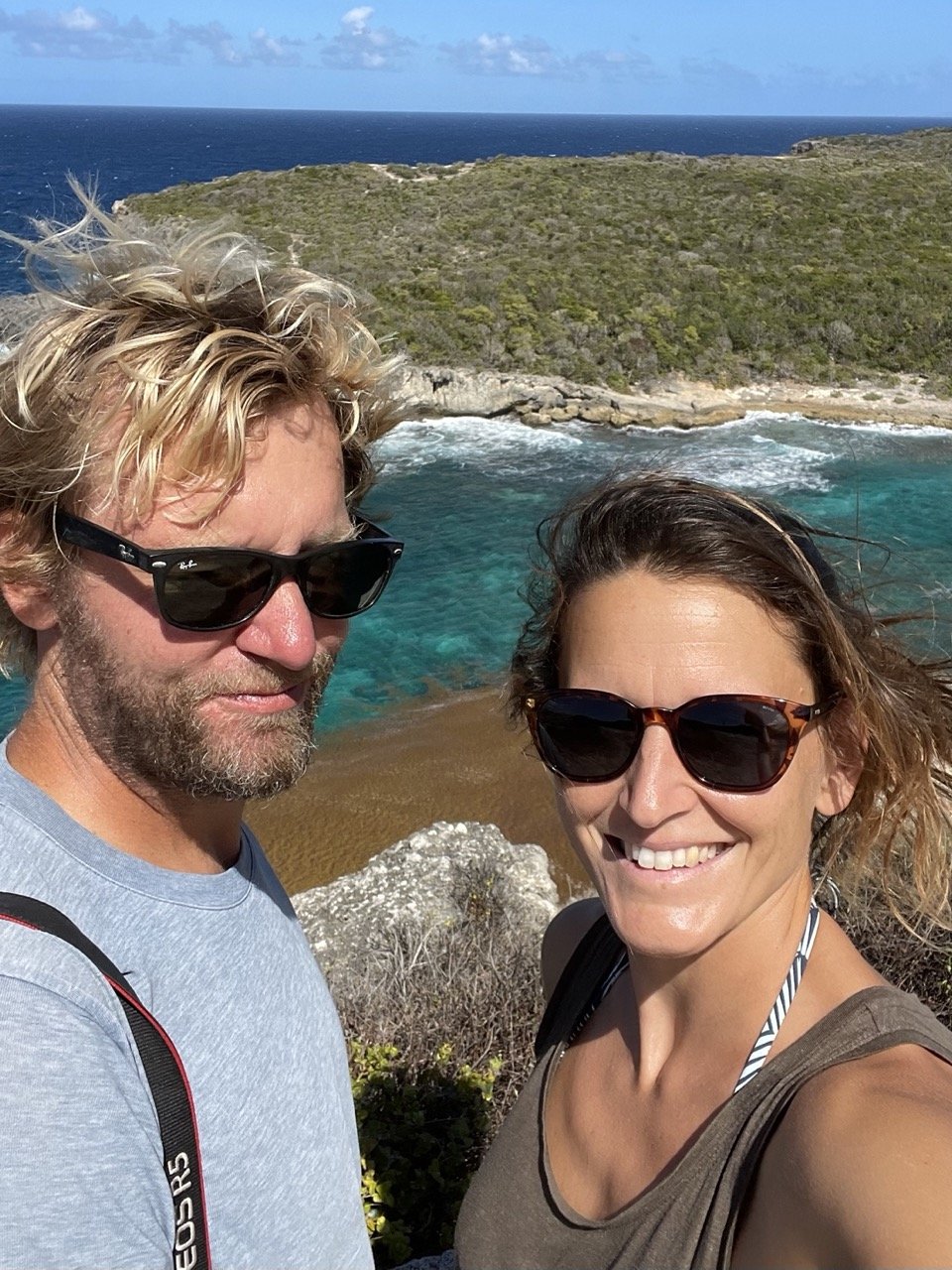«Every real story is a never ending story»
It has been a while. Since we arrived in Martinique in early January, many things have happened. We sailed south to St. Vincent and the Grenadines, snorkeled with turtles, made new friends, caught some squalls, had some really challenging passages, had to hunker down below because of heavy rain, we saw countless rainbows, some dolphins, and even some whales. We were amazed by the beauty of the Caribbean. In our minds, it's a busy place, full of charter boats, blasting music, and flat islands with white-sand beaches. Well – this was not our experience, and every island was different. From the postcard beaches of the Grenadines to the lush volcanic island of Dominica.








All this diversity had one constant - our engine. Or better, the lack of a working engine. And this is what this blog post is about.
After sorting out the whole cooling side of our engine (raw water pump, impeller, oil cooler, and heat exchanger), we were confident that the engine would run fine. And it did. Until it didn't. South of Guadeloupe lay the archipelago of «Les Saintes». A small group of Islands we visited on our way north. After a week, we were ready to leave to Guadeloupe. Otto has had issues with starting up, probably because one of our injectors wasn't completely sealed anymore. But as one mechanic assured us, this was a repair for the hurricane season. So – we tried to start the engine, and it wouldn't start. Eventually, the starter motor couldn't turn the engine over anymore. Something was off. It felt like a part was stuck in the engine. Surprisingly, when I checked the engine with my basic knowledge, I saw that the fuel filter was half empty. Usually, this is due to an air intake in the fuel system, a clogged pipe or hose, or dirty fuel. We ruled out contaminated fuel and a clogged pipe, as there was no debris in the filters. So, air in the system.
I couldn't find any, so I bled the system, and voilà, the engine revved up. For about 15s and then died again. Whatever this is, it's beyond my understanding of an engine. So we organized the only mechanic on the island. His diagnostic (besides having me buy an overpriced new starter battery) was that we needed to go to the main island and have our engine looked at by another mechanic. So, off we went towards the marina of Rivière Sens, on the southwestern coast of Guadeloupe. I spare you the details of changing winds once you sail on the leeward side of an island without an engine. But here is our track:
Through friends in Switzerland, we received the contact of a good mechanic here in Guadeloupe. So when he came by, he told us that at least one of the pistons had seized and that we'd probably need a new cylinder head gasket (that's the thing that's supposed to keep water out of the engine block). He had already contacted Volvo here in Guadeloupe, and they said they don't carry any more parts for this engine. The mechanic told us we should consider buying a new engine since no more spare parts exist. Thanks to years of having to deal with Otto, we know that
Volvo Penta has very few parts for our engine and sells them at a ridiculous price tag.
Everything that is the original Volvo Penta is costly. Be it parts or labor.
Some great after-market websites sell many new parts for older engines like our Otto.
So, we asked the mechanic if he felt confident he could fix our engine if we organized all the needed parts. He said yes, so the online shopping began:
New cylinder head gasket
New copper sleeves for the injectors
New injector nozzles
New gaskets for every conceivable pipe, pump, heat exchanger, and pretty much any other part on our engine
New exhaust valves
New piston rings
New cylinder head bolts (why not…)
and why not a new starter motor. we had a feeling…
So, all the parts were here within a week. The copper sleeves for the injectors were a bit trickier. We found them on a Swedish website that sells parts for trucks. Unfortunately, they only sell through their dealers network, so we reached out to the closest dealers in Venezuela, Panama, and the US. It turns out the US was the cheapest.
So everything was ready. The mechanic took off the cylinder head, and we got a good look at the cylinders. There was salt water in them. Not good. But no water in the oil – which is a good sign. The piston rings, which prevent any liquid from dripping into the oil, seem intact. Otherwise, we would have to take apart the engine completely. Strangely enough, the cylinder head gasket looked pretty good. No sign of water intrusion. Strange. The mechanic carried the cylinder head and the spare parts to various workshops on the island. During that week, our task was to gently tab the stuck piston and use penetrating oil to unstuck them. Two pistons seemed free after a couple of days, but the one in the middle didn't budge. When our mechanic came back with the revised and shiny cylinder head, he told us, «Tonight, your engine will run.»
Some curse words later, he went off, finding the biggest wrench on the island to free the stuck piston. A couple of days later, the big wrench did precisely that, and the reassembly of the engine could commence. Yay. «Tonight, your engine will run.»
Hours later, the engine was finally remounted. I was commanded to turn the key. The starter motor would spin, but no sign of life from Otto. Instead, there was seawater spewing out of the turbo. That was not a good sign and again, seawater dripped into the cylinder. The ordeal of taking off the cylinder head began again. A couple of days later, the verdict was clear: there must be a crack in the cylinder head. Saltwater made its way to the exhaust side – not good. Unfortunately, that is not something that can be fixed.
The shiny cylinder head was trash. Volvo, in the meantime, let the mechanic know they might have a brand new cylinder head laying around in some boxes. But since they don't have an inventory, he had to dig his way through boxes and found a new cylinder head. We bit the bullet and bought it. Our mechanic put everything back together. «Tonight, your engine will run.»
Nope.
It just wouldn't start. In the meantime, the starter motor died, but luckily we had ordered a spare one. That didn't change much either.
The mechanic realized that our exhaust system might have a design issue. The muffler on our boat is installed above the exhaust manifold – which doesn't make sense because its purpose is also to hold water back that is pumped through the engine when turning the ignition key. So we had to buy a 'water lock.' Installed it, but still nothing.
Just to give you a timeline, at this point, we have been here for about 6 weeks.
After many tries and us fearing for the newly bought starter motor and our starter battery, our engine finally spun up. We let it run for about an hour. There was a bit more smoke than usual, but all the new parts «…need to settle in…». The mechanic was about to leave when Kristel asked if we could just put in the gear to see if it worked. And fortunately, we did. As soon as the engine is in gear, it doesn't rev up anymore. It stays at 700 RPMs, no matter how much we try to accelerate. By that point, our mechanic was done with the engine. He had no idea what else might be wrong and said he needed to study the schematics of the engine. Fair enough.
Unfortunately, a medical issue prevented him from showing up for the next few weeks. Hence, a new mechanic came to face Otto. We explained what had been done so far. «It's gotta be the injector pumps…» – so, down below he went, unscrewed the pumps, and it seems he had found the issue. Fuel goes into the pumps, but nothing comes out. He took the three pumps and the injectors and brought them to a workshop to test and clean them. It looked like they got some seawater because they were rusty, and some parts that were supposed to move didn't. The mechanic returned a couple of days later and mounted the new pumps just to find out that one pump was still not working. Some cursing later, he took the said pump out again and was off to the workshop. But Friday afternoons in Guadeloupe, people at workshops don't seem to be working.
So another weekend goes by. Tuesday, he shows up. Pump installed. Turned the ignition key. Otto coughs and revs up to full throttle. 3600RPMs, and a lot of smoke. We tried to kill the engine, but the lever that was supposed to cut off the fuel supply didn't move. The mechanic had to unscrew the fuel line to starve the engine. During this process, fuel spilled all over our engine room. What happened? He doesn't really know. Something with a copper bar that connects the pumps and thus controls the fuel flow. So – another thing to be taken apart – but there is no real access to it, as it is in the engine block. It was around 9pm, and the mechanic went home and came back the next day to give it another try. And – surprise, the engine won't start. No fuel coming out. Everyone is puzzled. At least he was – we didn't expect it to run. Too many times, we had false hope.
We've been here for three months. And we spent quite a lot of money on the engine and the marina. And the engine is still not running.
Hurricane season has started – and the first storms begin to roll in. We will leave from here under sails only, sometime early next week. Not ideal, but we should be able to sail into Carriacou and then wait for a good weather window to sail to Grenada, where our new engine awaits.
The story of Otto will end over the next couple of weeks but our endeavor with it felt never-ending. And then, there will hopefully be no more boring blog posts about engine troubles.

